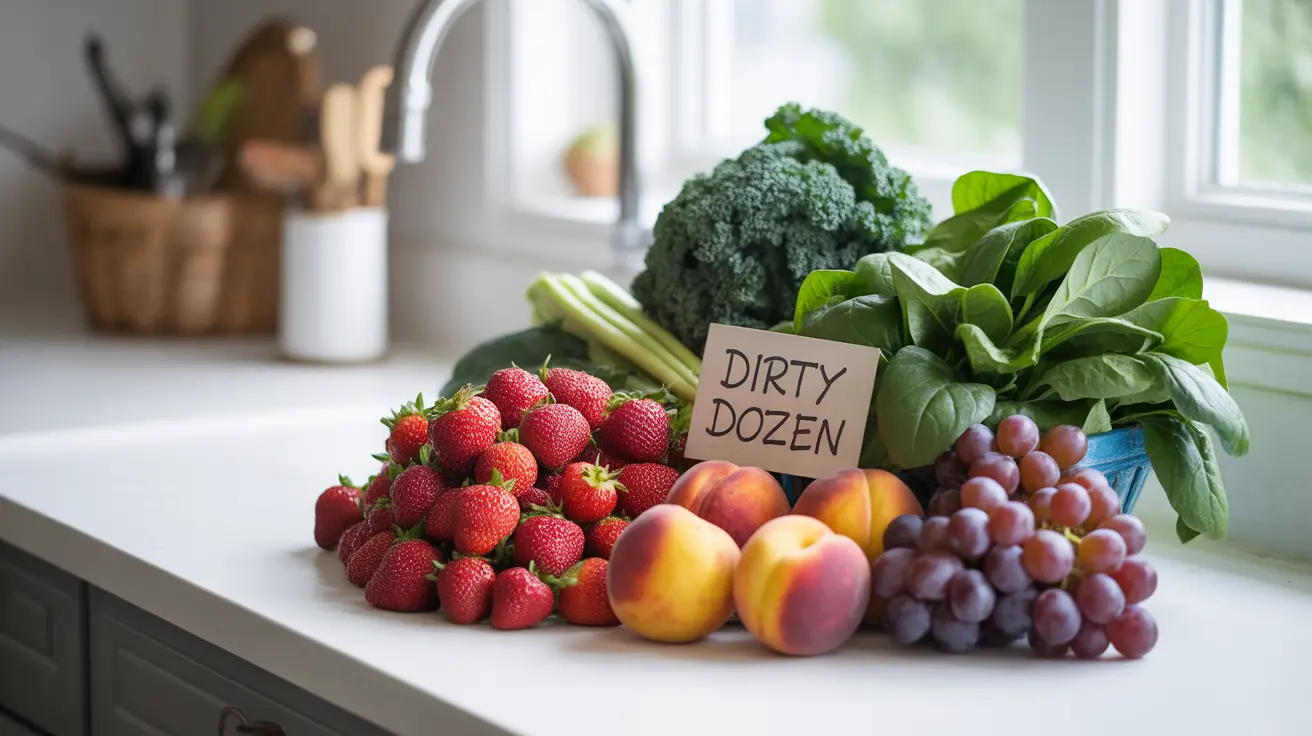Understanding which fruits and vegetables contain the highest levels of pesticide residues is crucial for making informed decisions about your food choices. The Dirty Dozen list, updated annually by the Environmental Working Group (EWG), serves as a valuable guide for consumers concerned about pesticide exposure through their produce consumption.
This comprehensive guide explores the latest Dirty Dozen list, its significance for your health, and practical ways to make smart choices when shopping for fruits and vegetables.
Understanding the Dirty Dozen List
The Dirty Dozen is an annual report that identifies conventional fruits and vegetables with the highest pesticide residues after washing and preparing them as consumers typically would. This list helps shoppers make informed decisions about when to prioritize organic purchases to minimize pesticide exposure.
The 2023 Dirty Dozen List
The latest Dirty Dozen list includes the following items, ranked from highest to lowest pesticide levels:
- Strawberries
- Spinach
- Kale, collard, and mustard greens
- Peaches
- Pears
- Nectarines
- Apples
- Grapes
- Bell and hot peppers
- Cherries
- Blueberries
- Green beans
Impact on Health and Consumer Choice
While pesticides help protect crops from pests and increase yield, some studies suggest that regular exposure to pesticide residues may potentially impact health, particularly in vulnerable populations such as children and pregnant women. Understanding the Dirty Dozen list helps consumers make strategic choices about when to invest in organic options.
Reducing Pesticide Exposure
Practical Shopping Strategies
Consider these effective approaches to minimize pesticide exposure while maintaining a healthy diet:
- Buy organic versions of Dirty Dozen items when possible
- Choose seasonal produce to reduce cost
- Shop at local farmers' markets where you can discuss growing practices
- Consider frozen organic options, which are often more affordable
Proper Produce Cleaning
Whether organic or conventional, proper cleaning can help reduce surface pesticide residues:
- Wash all produce thoroughly under running water
- Use a produce brush for items with firm skin
- Remove outer leaves of leafy vegetables
- Peel fruits and vegetables when appropriate
The Clean Fifteen Alternative
The Clean Fifteen list complements the Dirty Dozen by identifying conventional produce with the lowest pesticide residues. This list helps consumers balance their budget while maintaining healthy eating habits.
Frequently Asked Questions
What is the Dirty Dozen list and why is it important for consumers?
The Dirty Dozen list is an annual guide published by the Environmental Working Group that identifies the twelve fruits and vegetables with the highest pesticide residues. It's important because it helps consumers make informed decisions about when to prioritize organic produce purchases to reduce pesticide exposure.
Which fruits and vegetables are included in the 2023 Dirty Dozen list?
The 2023 list includes strawberries, spinach, kale (including collard and mustard greens), peaches, pears, nectarines, apples, grapes, bell and hot peppers, cherries, blueberries, and green beans. These items showed the highest levels of pesticide residues in testing.
How can I reduce my exposure to pesticide residues on conventional produce?
You can reduce exposure by thoroughly washing produce, using a produce brush when appropriate, peeling when possible, removing outer leaves of leafy greens, and considering organic options for items on the Dirty Dozen list.
Should I always buy organic for all items on the Dirty Dozen list?
While buying organic for Dirty Dozen items can reduce pesticide exposure, it's not always necessary or practical. Consider your budget, availability, and personal health priorities. The benefits of eating fruits and vegetables, even conventional ones, typically outweigh the risks of pesticide exposure.
What is the difference between the Dirty Dozen and the Clean Fifteen produce lists?
The Dirty Dozen identifies produce with the highest pesticide residues, while the Clean Fifteen lists fruits and vegetables with the lowest pesticide residues. The Clean Fifteen helps consumers know when conventional produce is a reasonable choice, helping them balance health concerns with budget considerations.




